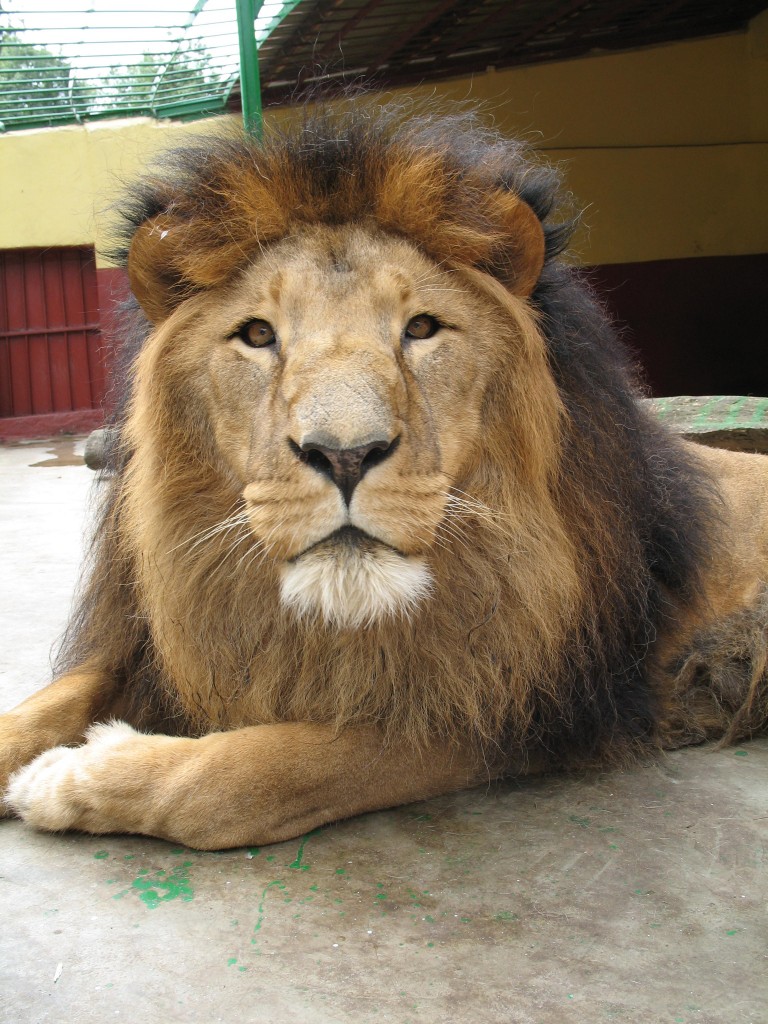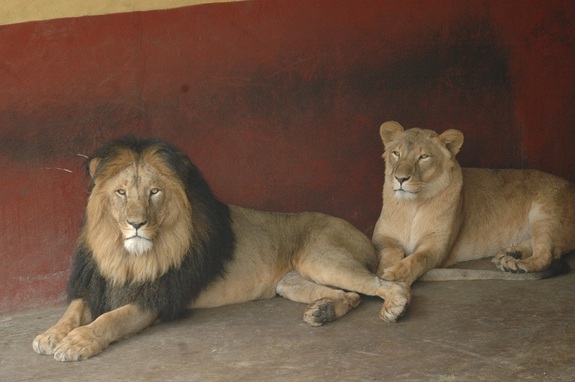Lion Genetic Testing Discovers a Distinctive Group of Lions
Lion genetic testing helped to confirm what scientists suspected. Scientists thought there was something different about the fifteen lions living in the rundown Addis Ababa Lion Zoo. The male lions living in the Ethiopian zoo have large, dark brown manes that extend down their chests through their front legs, down their backs below their shoulders and the length of their belly through the groin. These male lions are also smaller in body size than their cousins from eastern and southern Africa. These distinguishing features in the Addis Ababa Lions made the biologists think this group of lions are distinctive, and in fact, made them wonder if they could be the relatives of an extinct lion subspecies.
It had been speculated that the Addis Ababa lions might be the last pure relatives of North African Barbary lions or South African Cape lions, both subspecies now extinct. Or could these 15 lions be a completely genetically distinctive population of lion?
Lion Genetic Testing Determines if Barbary or Southern AFrican Cape Lions
The lions are descended from a private collection of the last Ethiopian ruler, Emperor Haile Selassie, who captured their ancestors from the wild and brought them to his palaces in the 1940’s. Today, these lions live in the same holding pens as the first lions captured, only now the zoo is in poor condition and the lions are lacking proper nutrition, and inadequate space.
Addis Lion zookeepers became so overwhelmed caring for the lions that they reached out to their German “sister city” Leipzig, for help. Vets from the Leipzig zoo traveled to Ethiopia to check the health status of the lions. While examining the lions, a team of vets took blood samples for genetic investigations for an international breeding program in case the results confirmed these lions are their own subspecies or perhaps their own genetic construction.
The results from the blood taken from the fifteen lions descended from Emperor Salassie’s collection, showed the Addis lions are distinctive, most closely related to lions in Africa, not lion populations in Asia. The analysis showed the existence of three African lion clusters:
- 1) the lions of Addis Ababa
- 2) Lions in north-eastern Africa, near the Ngorongoro Crater and the Serengeti and
- 3) the lions in south-western Africa in places like Etosha, Kalahari and Kruger.
Searching around the world for this genetically distinct lion
Scientists are now searching for this genetically distinct lion across Africa and in zoos throughout the world. Genetic testing proved these lions are distinctive and for this reason, the Addis lions will now receive better care including being relocated to a modern facility that is under construction to be finished this year.
DNA frees captive lions from their small pens
Genetic testing enabled these 15 Addis lions to be freed from their small holding pens and to be moved to a new state of the art holding facility with an internationally monitored captive breeding program. But as we know, the lion conservation story doesn’t end here. Given the deterioration of wild habitat due to the ever increasing human population and persecution by humans, one can’t help but wonder if any descendants of the Addis lions will ever be free?
The goal of a breeding program is to conserve the Addis population and its genetic diversity. And just as important, the lives of the 15 individual Addis Ababa lions will be changed for the better, to live out their days with proper care and nutrition. We can be grateful that the Addis Lion Zookeepers reached out for help because this resulted in these lions being able to live happier, healthier lives. We can always hold on to the hope that some day a population of Addis lions will live in the wild across Africa, healthy and free from harm.


They are BEAUTIFUL!
They sure are! Thank you for reading Janet.